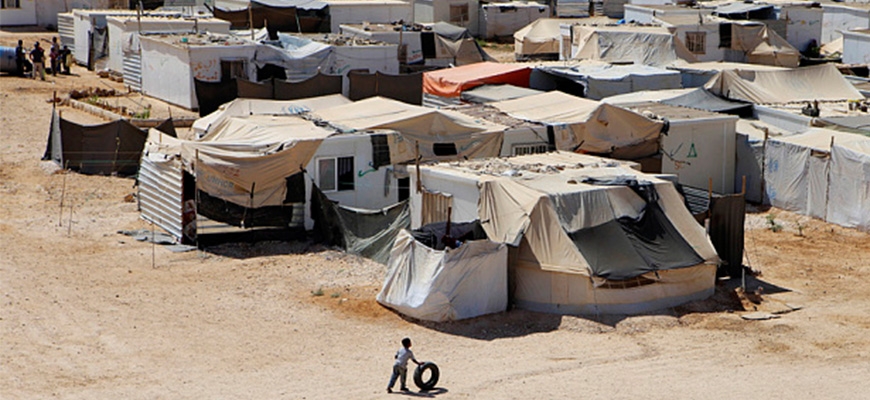
06 Aug 2015
There is a pizza delivery service, a coffee shop selling shisha and a street named Champs-Elysée. But dangers remain in the Zaatari refugee camp that is home to more than 80,000 Syrian refugees
In the middle of the Jordanian desert there is a wedding dress shop on a commercial street called the Champs-Elysée. It is run by Atef, a Syrian refugee who rents out dresses for 10 dinars (£9) each. A far cry from Paris, this street is situated in Jordan’s fourth largest ‘city’, Zaatari, a Syrian refugee camp near the Jordan-Syria border.
According to Jennie Corbett, an analyst at research institute RAND Europe who conducted research in Zaatari earlier this year, “these acts of resilience and entrepreneurship are all the more poignant and impressive considering the difficult conditions faced by those living in the camp”.
The camp was constructed by the government of Jordan and international agencies as part of a massive emergency response after the civil war started in 2011, but it is refugees like Atef, who have built up the social fabric which makes this place have a certain spirit of ‘home’.
The camp, which opened on July 28, 2012, has just had its three year anniversary. It all started with a cluster of United Nations High Commissioner for Refugees (UNHCR) tents erected when Syrians started to across the border.
Indeed, Zaatari’s basic structure was constructed in just nine days and was initially home to just 100 families, but after exponential growth it is now home to 81,000 inhabitants, all living within its five-mile circumference. Since the civil war began, approximately half of the country’s 22 million population has been displaced.
Due to the unplanned nature of the camp’s growth, administrators have found it particularly challenging to manage; people can move their tents and caravans and services are unevenly distributed across its vast expanse. For many residents, accessing basic services is a daily challenge as health and education services can be far away from where they live. For example, out of 12 districts, at the moment only three have schools.
Approximately half of school age children are currently enrolled, but attendance rates are unknown and likely to be significantly lower.
Marie-Louise Henham, also an analyst at RAND Europe said “It is a place which developed in reaction to urgent humanitarian need and as such, its development has been rapid, largely unplanned and shows elements of creative and entrepreneurial spirit,”
In fact, the camp is often referred to as being more like a city than a camp. There are public services such as hospitals, schools and mosques, and people are more inclined to make home improvements such as concreting floors or making toilets and showers.
Lining the Champs-Elysée is a coffee shop with shisha, a home-grown barber, a pizza delivery service, a falafel restaurant, clothing shops and even a travel agency. In total there are an estimated 2,500 refugee shops and 60 per cent of the refugee population earn some form of income from the camp. Such trade creates a sense of normality and permanence in an otherwise transitory space.
However, despite these elements of stability, the majority of refugees are still focused on return. Both Ms Corbett and Ms Henham recall their glimpses of the walls in Zaatari’s classrooms and pictures with the captions: “Help us back home.” With approximately 80 babies born a day, the camp is home to increasing numbers of Syrian children who have never lived in the country their families come from. Children often say that they want to become engineers, lawyers, carpenters among other industrious careers in order to ‘rebuild Syria’. Despite their substantial investment in their surroundings and the raging conflict back home, the refugees’ longing for return shows no sign of abating.
According to UN estimations, it takes on average 17 years for refugees in protracted crises like this to return home. To outsiders, the coexistence of struggle and vital energy makes Zaatari an amazing place because the refugees who live here have agency and a strong sense of the future.
However, despite an air of permanence they have created, many know this place is not home.

 عربي
عربي